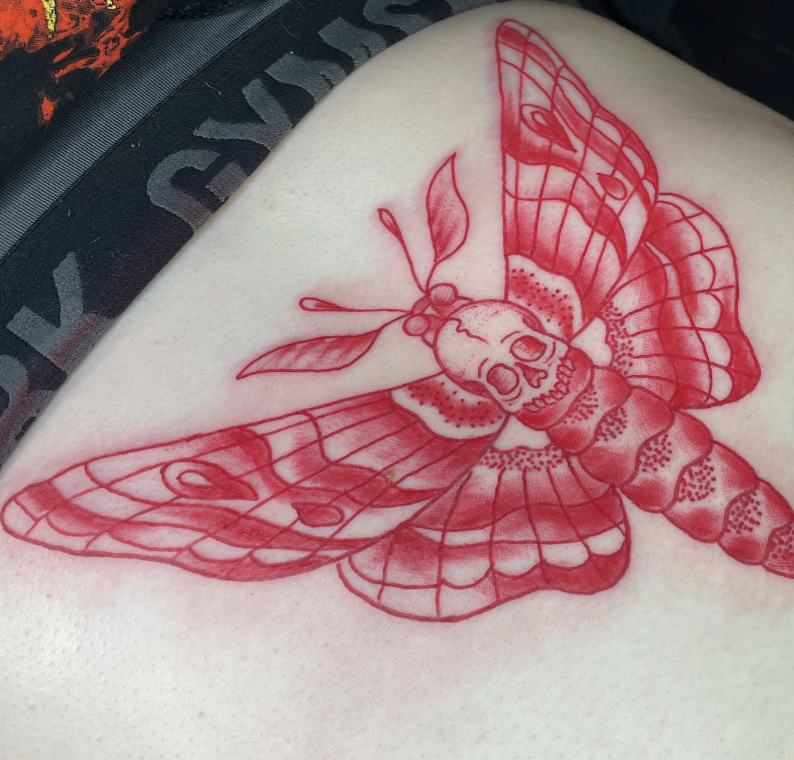
Tattoos are a huge commitment. Not only do you have to be okay with being extremely uncomfortable and sore during the process, but you’ve got to live with the ink for the foreseeable future.
The design is one thing, but your tattoo placement also plays a role in how painful the tattoo is, how easily the tattoo heals, and how the tattoo ages. Stomach tattoos have become more and more popular over the years, but is this placement a good idea?
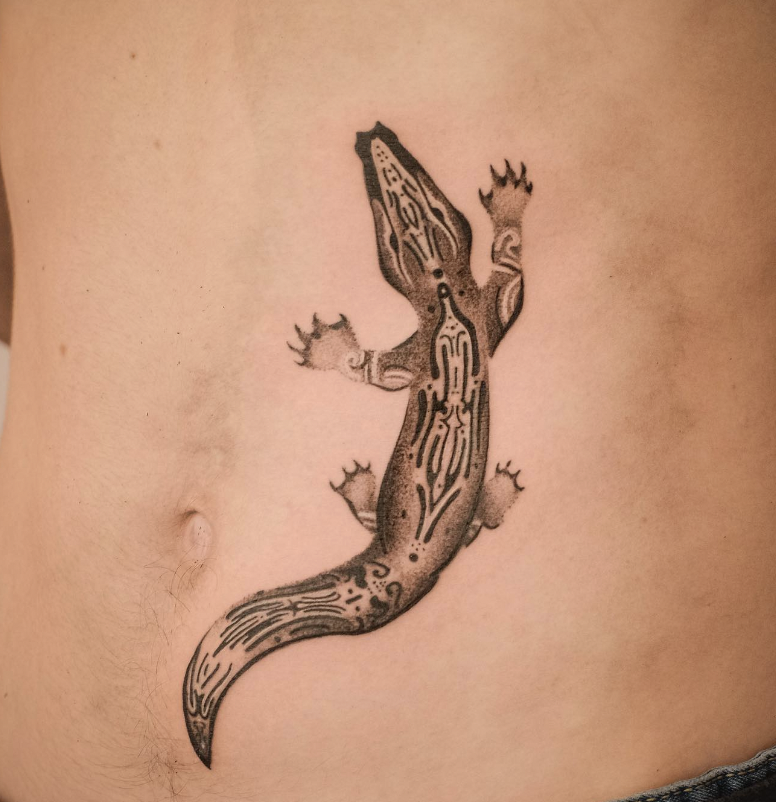
What Is A Stomach Tattoo?
This is a tattoo that is inked on the abdominal area, under the rib cage, and above the hips. There are different areas of the stomach to consider for a tattoo, including the lower abdomen, the sides of the abdominal area, and the center of the body.
Depending on the placement, your stomach for pain, and your aesthetic preferences, your stomach tattoo can vary in size and design, ranging from small, discreet tattoos to larger, more highly detailed pieces that cover a significant portion of the area.
No matter what area of the stomach you choose to tattoo, and no matter what kind of design you get, stomach tattoos are super easy to hide with clothing, so can be a great option for people who don’t want visible ink.
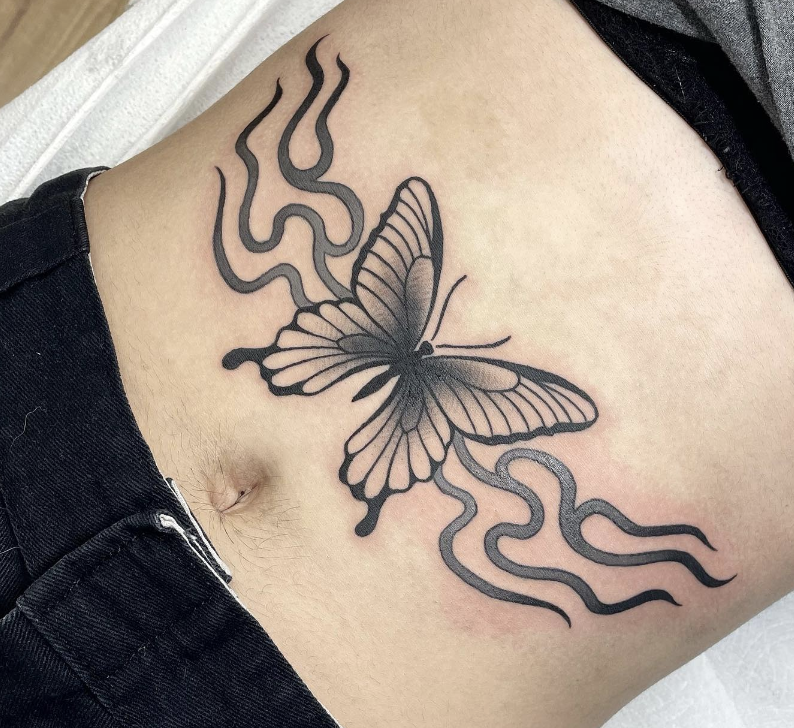
Is A Stomach Tattoo Painful?
Even in the least painful spots, getting tatted is uncomfortable. This is because you’re essentially getting an open wound. The tattoo needle is repeatedly inserted into the skin opening it up.
The pain of getting a tattoo is very personal – some people have higher pain thresholds than others so can handle the process with more ease.
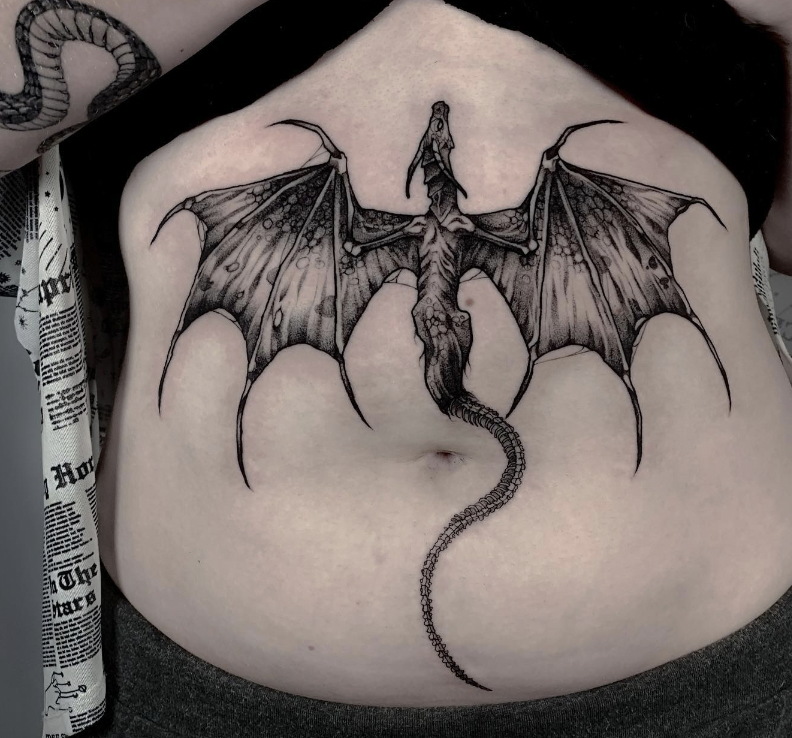
Placement also has a huge impact on how sore the tattoo will be. Areas with less fat and muscle to absorb the impact, and thin skin close to the bone, as well as areas with a lot of nerves, tend to be more painful to tattoo.
When it comes to stomach tattoos, they’re usually on the high end of the pain scale.
“The level of pain you experience depends on what kind of shape you’re in. People with higher body weights tend to have looser skin on their stomachs than people with lower body weights. A person with tighter skin over their stomach is likely to experience less pain than a person with looser skin in this area,”
Healthline
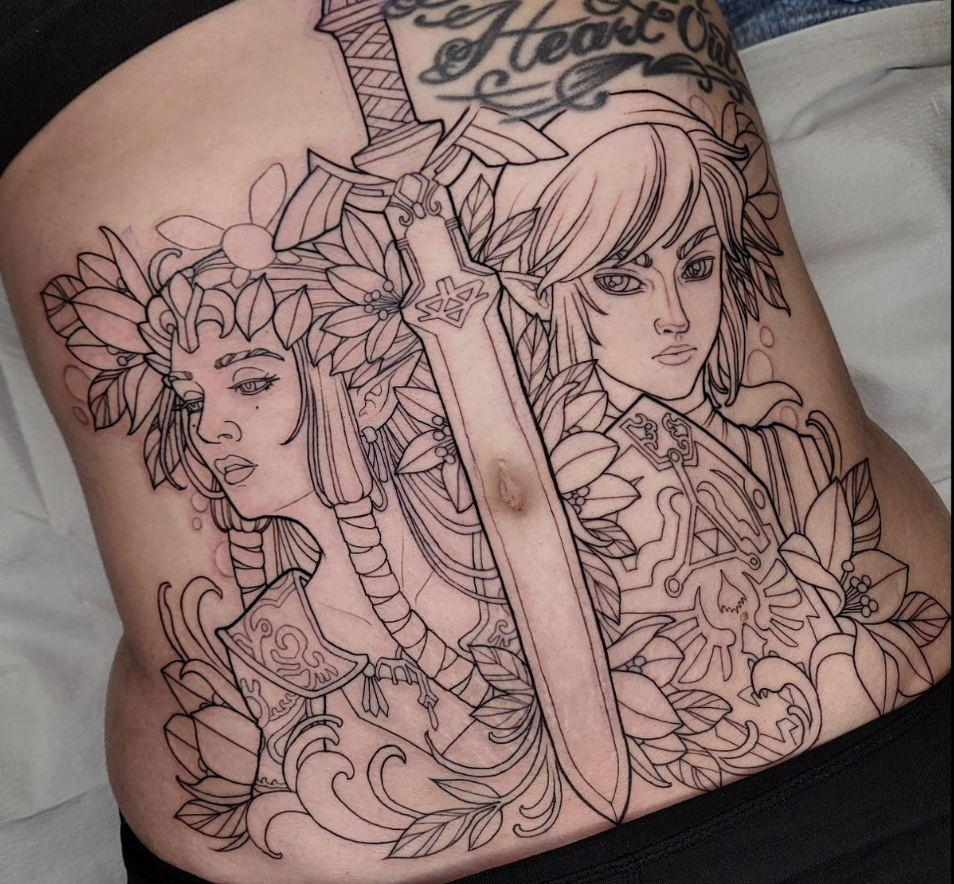
Are Stomach Tattoos A Good Idea?
This depends! If you love the look of stomach tattoos and you have a design that works well in this area, then go for it!
If you have stretch marks that affect your confidence, a stomach tattoo can be a great choice for you. Stomach tattoos can be used to cover stretch marks and scars.
If this is your plan, make sure to have a chat with your chosen tattoo artist so that they know your goals and can recommend design amendments for the best results.
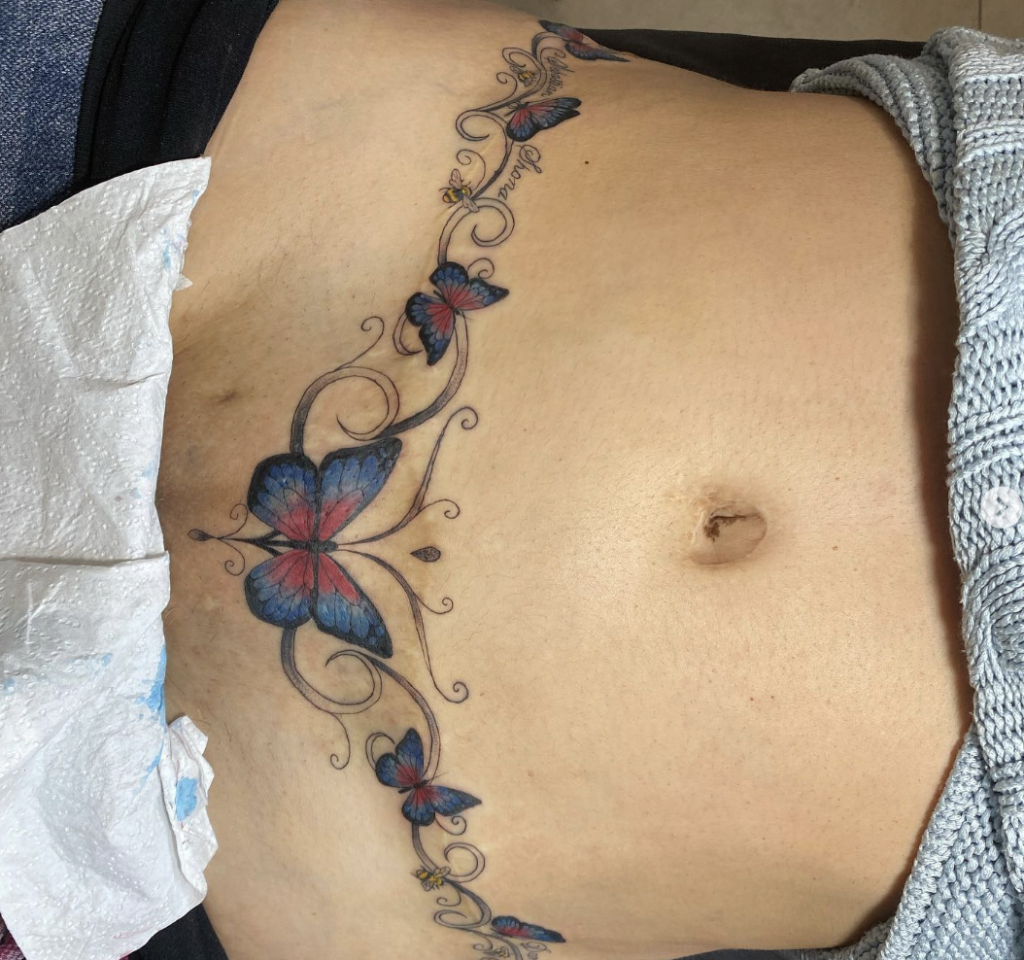
However, there are a few things to consider, such as your future plans. If you’re planning on being pregnant, the changes in your body during this period can have a big impact on your stomach tattoo.
“When you become pregnant, your stomach grows at a rate that is faster than your body is used to, so your skin often produces stretch marks. Skin fibers soften during pregnancy due to your hormones, making you more prone to stretch marks. If they develop on your tattoo, they can warp it quite a bit,”
Authority Tattoo
Also, a C-section surgery can further distort your tattoo.
Not only that, but any weight gain can impact the look of a stomach tattoo, as this area is usually the body part that is highly affected by weight fluctuations.
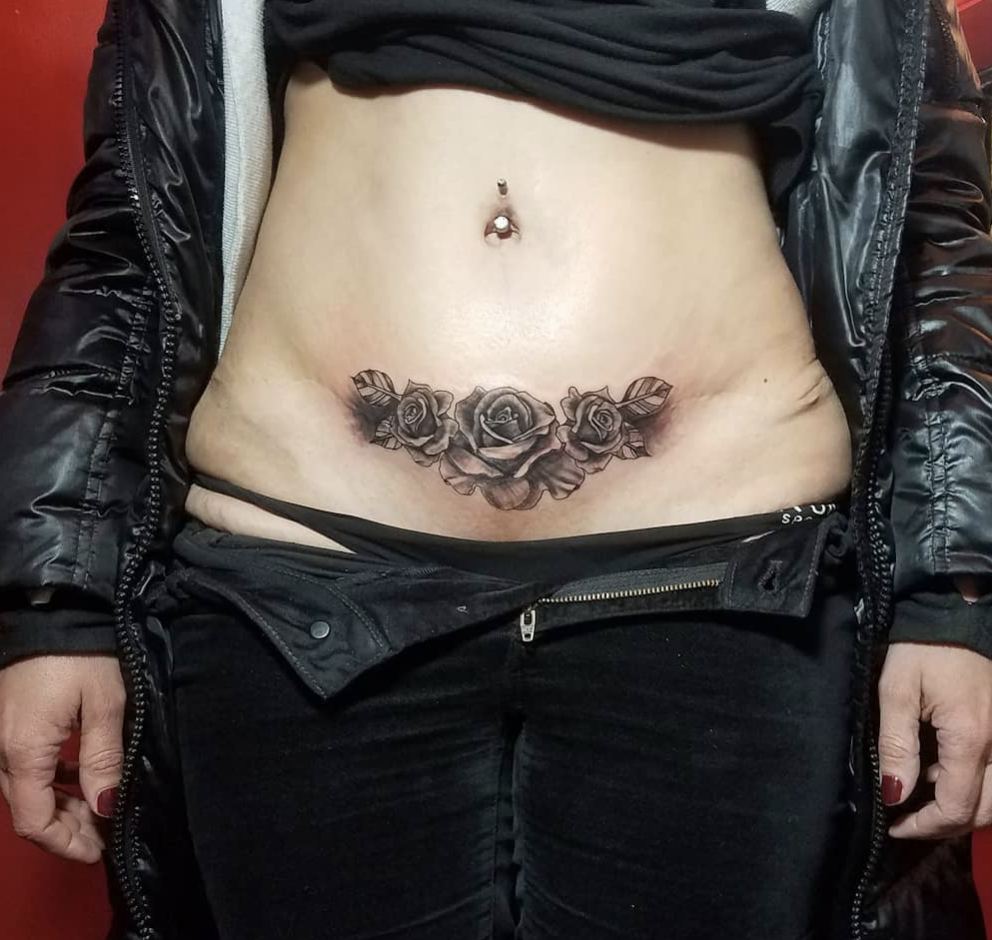
Do Stomach Tattoos Take Longer To Do?
The length of time it takes to do a tattoo depends on the size and intricacy of your design as well as the placement.
So, if your tattoo design is large or very detailed, it will take longer to complete and may even take multiple sessions (therefore generally more expensive). The smaller and more minimalistic your tattoo, the less time it will take for a tattooist to do it.
Stomach tattoos do generally take a long time to do compared to other placements. This is because it’s not an easy area to tattoo. A/B Moore Tattoo explains,
“A simple tattoo that would be on a low price range if placed on a leg could potentially double in price if placed on the ribs or stomach. This is because the skin stretches significantly, and tattooing takes twice as long with more skin to work with.”

Do You Eat Before A Stomach Tattoo?
It’s a bad idea to get inked on an empty stomach. Tattooing can really affect your blood sugar levels; if it drops significantly while you’re getting tatted, it may lead to light headedness, dizziness, or even fainting.
So, have a nutritious meal around an hour or two before your appointment to help your body handle the process better.
Don’t eat a massive burger outside the tattoo studio just before you go in – bloating can make things more difficult for your tattoo artist.
Also, it’s important to increase your water intake leading up to your appointment, as hydrated skin is way better to ink.
If you’ve got a low pain threshold, you may want to use a numbing cream. This can be found at pharmacies, or your tattoo artist may have their own – check with them.
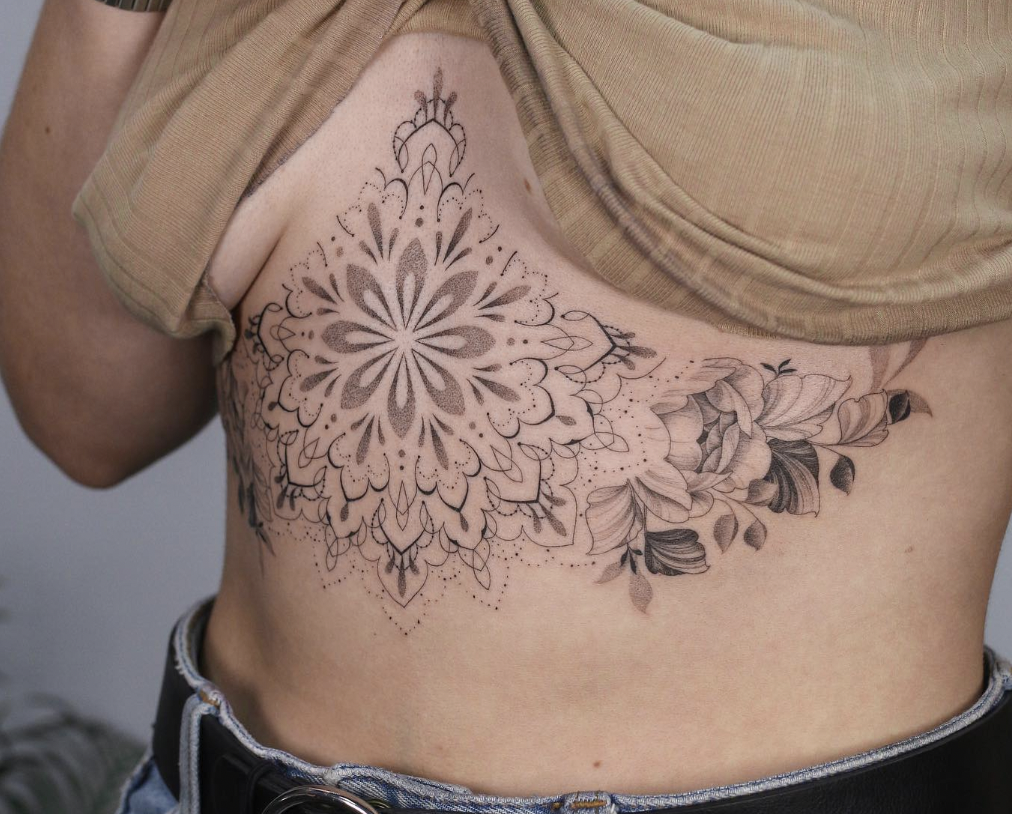
How Long Do Stomach Tattoos Take To Heal?
Generally speaking, the outer layer of a tattoo will take two to three weeks to heal. During this time, it’s important to wash your tattoo with gentle soap and keep your skin moisturized.
It’s also important to not put any pressure on your new tattoo – that means no stomach sleeping.
“Avoid sleeping directly on your new tattoo, at least the first 4 days. The goal is to try your best not to put any pressure on your tattoo and to keep it from touching anything, at least as much as possible. A healing tattoo needs lots of fresh air and oxygen, so try not to smother it while sleeping,”
Sorry Mom Shop

All tattoo placements have their pros and cons. It’s important to take your time with your decision and narrow down the placement that has more pros than cons, or cons that don’t really impact your lifestyle.
For stomach tattoos, prepare for the pain and the aftercare period so that the process is as comfortable as possible and the end result is a design you adore.

